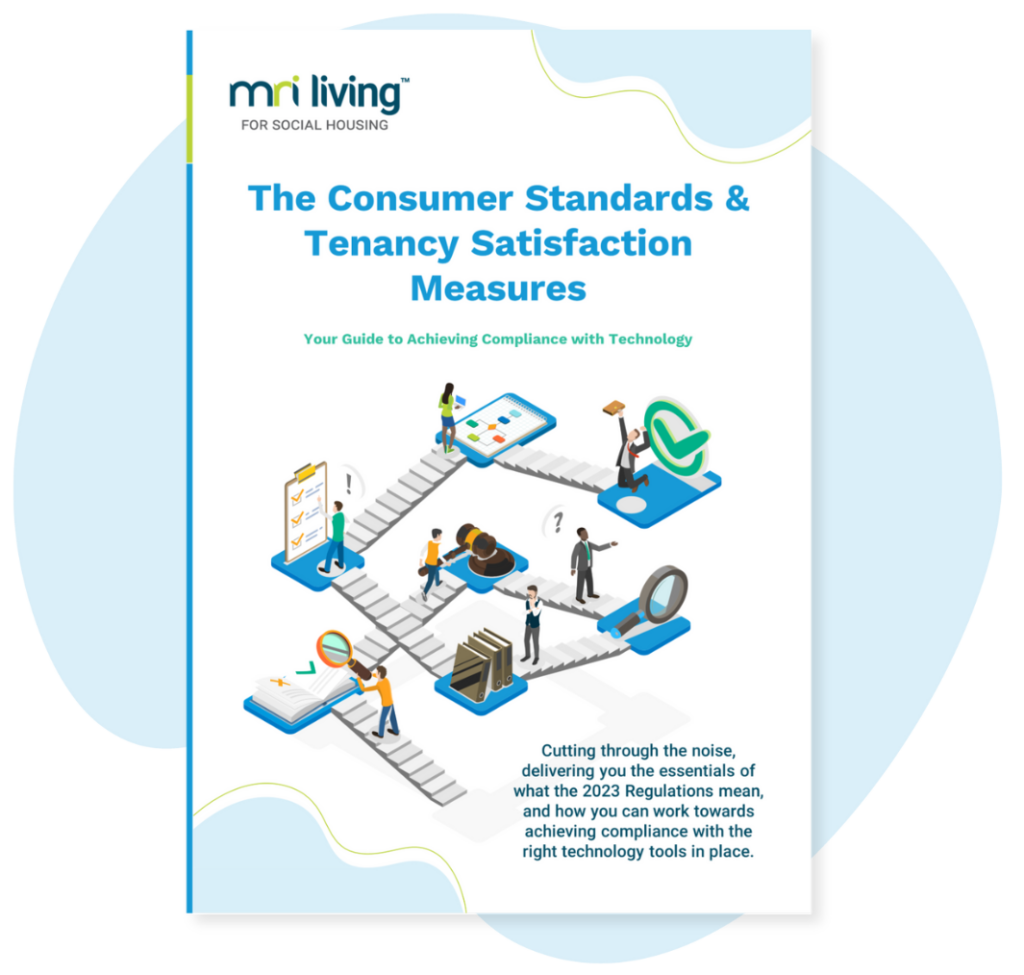Resident-led placement: The right to choose
By Eddy Irvine, HomeSwapper Account Director at MRI Software
HomeSwapper, by MRI allows social housing residents looking for a mutual exchange to really interrogate whether another home is suited to their needs and communicate directly with the person who’s living there about their experiences of the home, the neighbourhood and even the service provider. At its heart, mutual exchange empowers residents to move where they want through self-organised action.
Mutual exchange is the number one way that council and housing association residents can take control over the type of home they live in and the neighbourhood that they are a part of.
It’s not a new thing; residents have been able to swap homes in this way since the earliest days of council housing. Estimates believe that a quarter of moves made across social homes are done so via mutual exchange. It is recognised in the UK and The Republic of Ireland as sometimes a quicker route than long waiting lists for residents to find the right home for their needs.
For housing providers, offering residents access to HomeSwapper can be a way to reduce contact hours for allocations teams, reduce over-crowding and under occupancy and lessen the hefty cost of voids. Using the feature, ‘Advertise a Void’ housing providers can share empty properties to a national set of prospective residents. In 2016, it was estimated that void properties across the UK cost the affordable housing sector £500 million per year.
Resident-led
Self-service has become the norm for all of us in society across a range of transactions and interactions and the beginning of the COVID-19 crisis in 2020 only accelerated the uptake in digital self-service portals and digital interactions for housing providers.
Social housing residents are used to navigating Choice Based Lettings (CBL) applications for moving within a borough, through which they watch for new listings and ‘bid’ for a property. In many cases a large amount of people, including those on local authority waiting lists are all applying at the same time.
Home swapping takes some of that pressure away from residents, as the allocations won’t be made on a points-based system. Instead, exchanges are made through peer-to-peer communication, then a mutual exchange application, followed by written permission or otherwise by the housing providers involved.
Housing providers, individually or as collectives, can give social housing applicants a larger role in choosing their placement through digital platforms.
Just because an activity is resident-led or done through an instant access portal does not necessarily mean it’s an instant process. One Swapper Story from Carl, living in Dorset describes a common phenomenon of using HomeSwapper to complete a series of mutual exchanges to ‘lily-pad’ from Nottinghamshire to Dorset. He told our team, “All in all, it probably took about four years. Which sounds shocking, but you had to work at it and we worked hard – really, really hard to do everything possible. With so many ups and downs it was like a rollercoaster.”
On the other side of mutual exchange, there are instant successes like this experience shared by a tenant from the Northern Ireland Housing Executive in 2020: “We were able to swap to a ground floor flat with a more manageable garden in east Belfast within 6 weeks. We really love it here and are delighted our old house can now be used by someone else to bring up their family.”
What is important is that we at HomeSwapper, along with housing providers share these stories to encourage residents who haven’t yet had any luck on the mutual exchange front; for some it’s going to take a lot of perseverance and work, but it can pay off. Another of our swappers said, “You have to be committed to it. You can’t just put [your ad] there and expect people just to find you; you really have to put in the work and you have to be polite and kind and responsive to everybody.”
Taking the time to encourage those residents looking to move to embrace mutual exchange can be of great benefit to housing providers. The Green Paper in 2018 estimated that £200 million in empty properties are saved by swapping. Residents can be an asset to these homes and help housing providers avoid costly voids. The descriptions they give for their current home on HomeSwapper are often far better equipped in telling potential exchangers what it is about a neighbourhood that’s worth loving and making a new home from. This is compared to housing associations or local authorities listing homes without having had a lived experience of them.
Tackling Stigma
Research from Shelter found that over 60% of those in private rentals feel that they would be perceived “in a more negative light if they lived in social housing.” For those on low and moderate incomes, these perceptions need to be tackled with more housing options being developed across the UK into social rents, affordable rents, housing association homes and shared ownership.
On the positive side, renters with a council or housing association have the right to move across the country without agency fees by swapping their homes and a robust regulatory environment which is set to strengthen in the next few years. On the other hand, these residents have less choice to vote with their feet. Tackling stigma against those in social housing is one aim of the Charter for Social Housing Residents. New customer satisfaction measures and ongoing consultation with residents are expected to be a transformative process in the coming years.
Part of the role of companies like MRI Software, aside from providing solutions that facilitate moving home as easily as possible, is to champion the residents and the positive work that housing providers do. This includes moving away from stereotypes of those in social housing as the most vulnerable in society and revealing the broad, normal and complex communities in those homes and the actions they can take to exercise control over their lives.
Informing the Sector
In the Charter for Social Housing Residents, it was announced that an “evidence collection exercise” will be undertaken imminently to ensure “that housing is allocated in the fairest way possible and achieves the best outcomes for local places and communities.” It’s going to be important over the next few years for housing providers to utilise data to understand what ‘fair’ means and what their residents want from their homes.
The data collected by HomeSwapper about the choices of properties and preferences made by residents can shed light on what the community needs from their homes and the type of developments that should be planned for the future. HomeSwapper data across 2020 showed that the COVID-19 lockdowns had changed what residents were looking for in prospective moves.
By encouraging people to take their future into their own hands, I believe that mutual exchange is a vital part of the range of choices that social housing residents have. Housing providers and services like HomeSwapper, by MRI should always be building services that enable them to live in the home that they want, in a part of the country that makes them happier or closer to their families.
If you want to know more about the journey from search to swap, click here.
The Consumer Standards and Tenancy Satisfaction Measures: Your Guide to Achieving Compliance with Technology
Cutting through the noise, delivering you the essentials of what the Consumer Standards and Tenancy Satisfaction Measures 2023 Regulations mean, and how you can work towards achieving compliance with the right technology tools in place. New regulatio…

